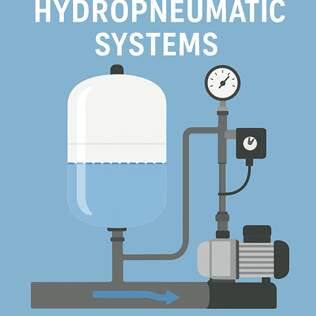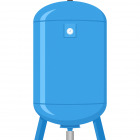Hydropneumatic Tanks: Types, Components & How to Choose
Hydropneumatic tanks keep water systems stable by storing pressurized water and using trapped air to smooth pump starts, reduce cycling, and maintain steady pressure. Whether you call it a hydropneumatic tank, hydro pneumatic pressure tank, or part of a hydro pneumatic pump system, the function is the same: buffer, balance, and protect your pump and plumbing.
Types of hydropneumatic tanks
- Bladder tanks (precharged): A flexible rubber bladder separates water from the air charge. Very common in domestic booster systems and preferred for consistent precharge and low maintenance.
- Diaphragm tanks: Similar to bladder style, with a fixed diaphragm; reliable and compact.
- Plain steel (wet) tanks: No bladder, air mixes with water; cheaper up front, but require frequent maintenance to maintain the correct air cushion.
- Vertical vs horizontal designs: Orientation affects footprint and installation. Vertical tanks save floor space, horizontal tanks fit under low ceilings or in crawl spaces.
- Accumulator style tanks: Used in industrial hydro pneumatic systems where rapid discharge and recovery are required.
Key components explained
- Bladder or diaphragm: Keeps air and water separated to maintain steady pressure.
- Air charge/precharge valve: Allows setting the internal air pressure, typically 2 psi below pump cut in pressure for domestic systems.
- Pressure switch and gauge: Control when the pump turns on and off, and let you monitor system pressure.
- Check valve and isolation valve: Prevent backflow and allow servicing without draining the whole system.
- Pump: The hydropneumatic tank works as part of a hydro pneumatic pump system or booster, reducing pump short cycling and extending life.
- Air compressor (optional): In systems where air is lost, a small compressor or auto charger keeps the tank properly pressurized.
How to choose the right tank
First, define use case: domestic well, apartment booster, commercial laundry, or industrial booster. Each has different demands on drawdown and cycle frequency. Next, size matters: pick a tank that provides adequate drawdown so your pump avoids short cycling; manufacturers often list drawdown curves for 20-50% of nominal volume. Materials and warranty weigh heavily too; bladder tanks from reputable brands (for example brands often searched like Grundfos, AO Smith, Apex) cost more but reduce service hassles. For higher pressure needs, look for tanks rated to 100 psi or above. Finally, consider installation constraints: vertical tanks need less floor space, while horizontal models can be better for low clearance rooms.
Pro tip: verify hydropneumatic tank price and local service availability before committing, since labor to install and precharge the tank influences total cost.
Choosing wisely means matching capacity, pressure rating, and construction to the pump and the application. A properly sized hydropneumatic tank tames pump noise, saves energy, and keeps water flowing smoothly when you need it most. #hydropneumatic #pressuretank #hydropneumatics

